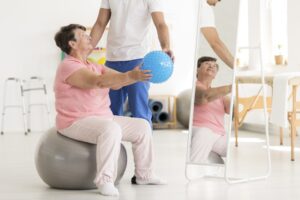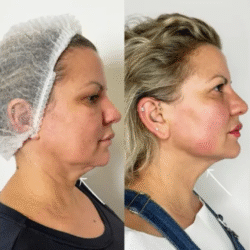Recovering from a stroke is a complex and challenging process that requires dedicated rehabilitation to regain lost functionality and improve overall quality of life. Traditionally, stroke rehabilitation involves visits to clinics or hospitals where specialized physiotherapists guide patients through targeted exercises and therapies. However, in recent years, the concept of Physiotherapy At Home Abu Dhabi has gained traction as a convenient and effective alternative, especially for stroke survivors who may face mobility issues or prefer the comfort of their own environment. This approach offers personalized care tailored to the individual’s needs, fostering a supportive setting for recovery. The question many ask is whether physiotherapy at home truly benefits stroke recovery, and the answer is a resounding yes, provided it is implemented with proper planning and expertise.
The Advantages of Physiotherapy at Home for Stroke Patients
Personalized and Comfortable Environment
One of the primary benefits of physiotherapy at home is the comfort it provides. Stroke survivors often experience fatigue and emotional stress, making travel to clinics taxing. Receiving therapy at home allows individuals to remain in a familiar environment, which can boost morale and motivation. Personalization of therapy sessions is also easier, as physiotherapists can tailor exercises based on the patient’s living space, daily routines, and specific needs, ensuring a more targeted and effective rehabilitation process.
Flexibility and Convenience
Scheduling sessions at home offers flexibility that can accommodate the patient’s daily routine, reducing missed appointments and promoting consistency in therapy. This flexibility is crucial in stroke recovery, where regular, ongoing rehabilitation significantly impacts outcomes. Additionally, home-based physiotherapy minimizes transportation barriers, making it accessible even for those with severe mobility impairments.
Family Involvement and Support
At-home physiotherapy encourages family participation, which is vital for stroke recovery. Family members can assist with exercises, provide emotional support, and help reinforce therapy routines between sessions. This involvement fosters a supportive environment that can accelerate progress and improve adherence to rehabilitation plans.

Effectiveness of Physiotherapy at Home in Stroke Recovery
Early Initiation and Continuity of Therapy
Starting physiotherapy promptly after a stroke is critical for optimal recovery. Physiotherapy At Home in Abu Dhabi facilitates early intervention, often immediately following hospital discharge, ensuring that therapy continues seamlessly without delays. Continuous, consistent therapy at home helps maintain momentum in recovery, preventing complications such as muscle atrophy, joint stiffness, or further decline.
Customized Therapy Programs
Home-based physiotherapists craft individualized rehabilitation programs that address specific deficits, whether they involve mobility, balance, coordination, or strength. These tailored programs are adaptable, allowing modifications based on progress or setbacks, thus providing a dynamic approach aligned with the patient’s evolving needs.
Use of Advanced Techniques and Equipment
Modern physiotherapy combines traditional exercises with advanced techniques such as neuromuscular electrical stimulation, mirror therapy, and task-specific training. When delivered at home, physiotherapists can integrate these methods using portable equipment, making therapy more engaging and effective for stroke survivors.
Challenges and Considerations
Ensuring Proper Technique and Safety
While physiotherapy at home offers numerous benefits, it requires a high level of expertise to ensure exercises are performed correctly and safely. Physiotherapists must assess the home environment for safety hazards and adapt exercises accordingly. Proper supervision minimizes the risk of injury and maximizes therapeutic benefits.
Maintaining Motivation and Engagement
Stroke recovery can be an emotionally taxing journey. Maintaining motivation during home therapy sessions can be challenging, especially if progress appears slow. Physiotherapists play a crucial role in setting realistic goals, providing encouragement, and employing engaging techniques to sustain enthusiasm.
Monitoring Progress and Adjusting Therapy
Regular assessment is essential to track improvements and modify treatment plans. Remote monitoring tools and periodic evaluations by physiotherapists ensure that the rehabilitation remains effective and aligned with recovery goals.
Why Choose Physiotherapy at Home for Stroke Recovery?
Convenience and Accessibility
Home-based physiotherapy reduces logistical barriers, making it easier for stroke survivors to access essential services. It is particularly advantageous for individuals with transportation difficulties or those living in remote areas.
Holistic Care Approach
Physiotherapists working in home settings can collaborate with family members, caregivers, and other healthcare professionals to provide comprehensive care. This integrated approach addresses physical, emotional, and social aspects of recovery.
Increased Comfort and Reduced Anxiety
Being in a familiar setting can alleviate anxiety and promote a sense of control over the recovery process. Comfort and familiarity foster better engagement in therapy sessions.
How to Maximize the Benefits of Physiotherapy at Home for Stroke Recovery
Consistent Participation
Adherence to prescribed exercises and attending scheduled sessions are vital for meaningful recovery. Establishing a routine and setting achievable goals can enhance consistency.
Active Family Involvement
Encouraging family members to participate in therapy sessions can provide additional motivation and support, helping the patient stay committed to their rehabilitation journey.
Open Communication with Physiotherapists
Clear communication about progress, challenges, and preferences allows physiotherapists to tailor interventions effectively, ensuring optimal outcomes.
Incorporating Assistive Devices and Technologies
Utilizing assistive devices and tele-rehabilitation tools can augment therapy, offering additional support and feedback outside scheduled sessions.
Frequently Asked Questions (FAQs)
1. Is physiotherapy at home suitable for all stroke patients?
Home physiotherapy is highly adaptable and can benefit a wide range of stroke survivors, especially those with mobility challenges or those who prefer the comfort of their home environment. However, the suitability depends on individual health status and specific needs, which should be assessed by a healthcare professional.
2. How often should stroke patients receive physiotherapy at home?
The frequency of sessions varies based on the severity of the stroke, individual goals, and progress. Typically, a tailored schedule is developed by the physiotherapist to ensure consistent and effective rehabilitation.
3. Can physiotherapy at home replace hospital or clinic-based therapy?
Home-based physiotherapy is designed to complement or sometimes replace traditional therapy, especially in the later stages of recovery. It allows for continuity of care in a familiar setting, although some cases may require periodic clinical assessments or specialized interventions.
4. What equipment is needed for physiotherapy at home?
Many physiotherapy exercises can be performed with minimal equipment, such as resistance bands, small weights, or balance aids. Physiotherapists can recommend appropriate tools based on the individual’s needs and home environment.
In conclusion, Physiotherapy At Home offers a practical, personalized, and effective approach to stroke recovery. By providing tailored therapy in a comfortable setting, it enhances patient engagement, promotes early intervention, and supports ongoing progress—making it an excellent choice for those seeking comprehensive rehabilitation outside traditional clinical environments.


